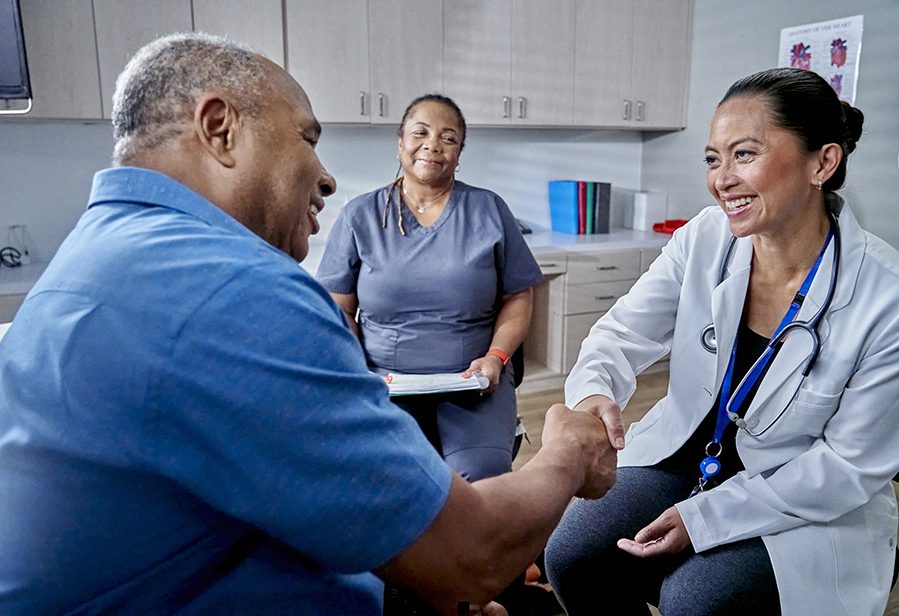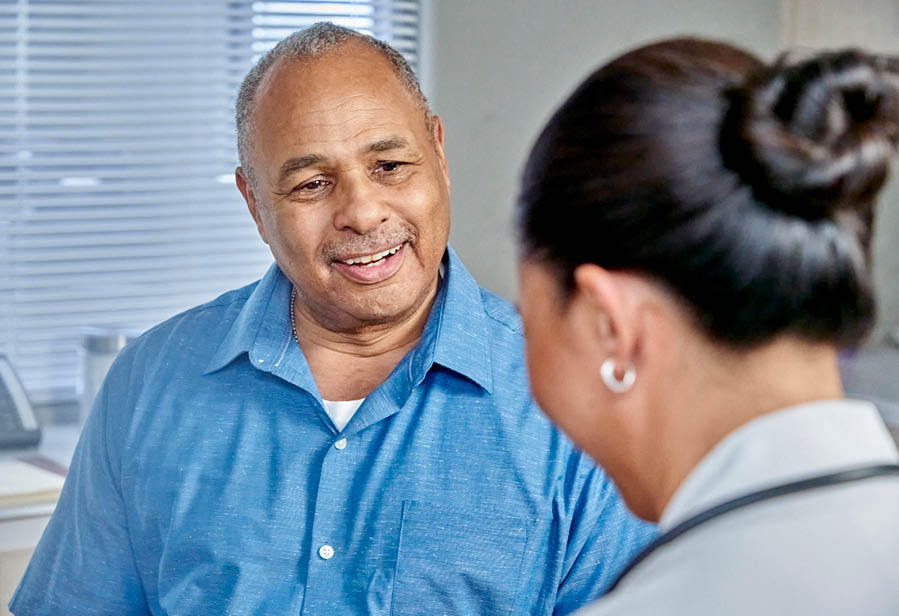The statistics are staggering.
Financial costs in the billions.
The emotional cost, priceless.
This is the face of cardiovascular disease, the term used to describe heart disease and stroke. According to the American Heart Association (AHA), cardiovascular disease is the number one killer of Americans and nearly half of all U.S. adults have some type of heart disease.
Women and people of color are at greatest risk: One in three women will die from heart disease. Blacks and Hispanics are more likely than Whites to suffer from hypertension (high blood pressure) and diabetes, which often leads to heart disease and stroke. Growing obesity, especially in children, contributes to the nation’s cardiovascular disease epidemic.
Despite this grim news, however, improving cardiovascular fitness even after years of neglect can make a positive improvement.
“It is never, ever, ever too late!,” says Tonja Reidy, Director of Operations for Cardiology for Intermountain Health. “[Heart disease] is a disease process so you can reverse that. Look at what you’re eating. Make simple changes like how often you exercise, how much you currently weigh, and start with small but achievable goals to improve.”
In her capacity, Reidy oversees 18 cardiologists, six Advanced Practice Providers, and a support team that provides care from five offices and four Southern Nevada hospitals. Reidy doesn’t just administer for this high-demand specialty; she is a clinician herself.
While Intermountain Health stays plenty busy with out-patient and in-patient care, it is not uncommon for the other specialties of primary care, women’s health, and pediatrics to focus on cardiovascular health as well.
“What’s unique about HCP is our approach is preventive, not just treatment,” notes Reidy. “We reach out to patients before they’re identified as having a heart disease process.” Focusing on wellness highlights the collaborative nature between the company’s multi-specialty teams and identifies patients at higher risk due to family history, race, lifestyle and age so that extra attention can help avoid problems later on. In the future, Reidy plans to expand this prevention effort with the help of HCPNV pediatricians.
Reidy explains, “Preventing heart disease starts in childhood. If we start with children and teach them better habits like how to increase activity and how to prevent heart disease by not smoking, and how they can eat better, as they grow older, they develop better habits and they’re not sitting in front of video games or midnight snacking.” Reidy plans to partner with local schools and take kids grocery shopping. Education is key.
According to the AHA, a persistent challenge in getting adults to improve their health habits is based on the mistaken and potentially deadly belief that somehow they won’t be affected. That’s where the technology may be able to bridge that gap.
The popularity of today’s wearable technologies such as Apple watches and FitBits often give consumers more than a practical tool to measure steps. Just ask HCPNV’s IT Desktop Support Supervisor, Scot Rawlings.
At 44 years-old, Rawlings had just completed his leg in the company’s Corporate Challenge biking event when he was overcome with exhaustion. “I was literally just sitting on my butt, trying to get the energy to get up when I saw Dr. Bharucha and he asked me how I was feeling,” says Rawlings. Dr. Prashant Bharucha is the Medical Director for the HCPNV team and was fortunately at the day’s event.
“He [Dr. Bharucha] took off his Apple Watch and put it on me and told me I had an elevated heart rate and thought I should get checked out,” Rawlings recalls adding that shortly thereafter he decided to get his own Apple Watch. A few days later Rawlings’ watch detected Atrial Fibrillation (A-fib or Afib), an irregular heartbeat (arrhythmia) that can lead to blood clots, stroke and other heart-related complications. He promptly went to the ER where doctors gave an electrical shock to his heart to get it to beat normally. Rawlings left the ER feeling better but with a powerful lesson: Heart disease doesn’t discriminate.
It is unclear whether family history or military injury resulted in Rawlings’ episode, but he’s taking no chances and recommitted to his heart health by making regular physical activity a priority. Rawlings eats right, sees his doctor regularly, and credits Dr. Bharucha, exclaiming, “He saved my life!”
Saving lives through awareness and education is what National Heart Month is all about, and no-where is that more evident than in the more than 350,000 cardiac arrests that happen outside of a hospital setting every year. The possibility that you may be faced with having to help someone whose heart has stopped is very real. It’s a scenario recently witnessed by NHL St. Louis Blues fans when player Jay Bouwmeester collapsed while on the bench. Prompt CPR and cardiac defibrillation saved him but far too many victims will die without the same level of readiness. Tonja Reidy knows this all too well.
“My mother passed away from cardiac arrest at age 53,” Reidy recalls. “She was driving with her best friend when she collapsed. Her bestie didn’t know CPR, so my mother lay dying for 20 minutes until highway patrol arrived to start CPR. By then it was too late.”
Reidy’s motivation to specialize in cardiology was prompted by this painful memory, but she’s equally committed to ensuring all community members understand how to minimize heart disease’s impact. Learning CPR is vital. Treating your body with respect by eating to live and not living to eat as well as taking time for self-care aren’t indulgences but necessities. Studies demonstrate that getting adequate sleep and maintaining a healthy weight, blood pressure, and glucose level will reduce the likelihood of a crisis.
Here are some more helpful tips for improving heart health:
Step 1: Get your numbers
Ask your healthcare provider to check your blood pressure and cholesterol. Blood pressure is an important determinant of cardiovascular risk. If you don’t have a healthcare provider, ask your medical insurance plan, trusted friends, or the local health district for recommendations.
Step 2: Own your lifestyle
Stop smoking, lose weight, eat right and participate in regular exercise. Ask your healthcare provider to help you. Small but consistent improvements add up to long-term healthy habits. Enlisting participation from family, friends, and workmates may make healthy activities more fun while benefiting all involved.
Step 3: Realize your risk
Lack of knowledge or denial can be deadly. Education provides the information necessary to make good decisions and be empowered by knowledge, not fearful of it.
Step 4: Educate your family
Make healthy food and lifestyle choices for you and your family, which means avoiding processed foods and soft drinks. Look for the AHA’s heart logo while grocery shopping. Many grocery stores host in-store cooking demonstrations on how to eat healthier for even the pickiest eaters. Encourage family participation in pet-walking, parking farther away while parking or opting for stairs over escalators while out and about.
Step 5: Learn CPR
It’s important to be prepared especially in the event of an emergency. Knowing what to do for a person in cardiac arrest including how to use an automatic defibrillator (AED), will not only help the victim but reduce panic. Low-cost CPR courses can be found online as well as through community organizations and fire departments.
Got questions about heart health or want a cardiology expert to address your school or workplace? Contact Tonja Reidy, Director of Operations – Cardiology at (702) 534-5464 or treidy@imailnv.org.






